265 vs 295 Tires
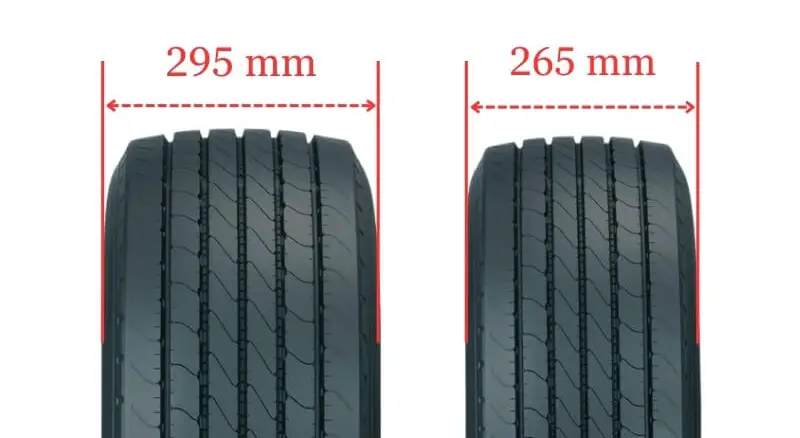
The main difference between a 265 tire and a 295 tire is the width – a 295 tire is 30mm (or about 1.2 inches) wider than a 265 tire. This wider tread provides more contact with the road surface.
265 vs 295 Tires
This table simplifies the process of comparing tire sizes and helps in comprehending their distinctions.
| Tire Size 265 | Tire Size 295 |
|---|---|
| Slightly better fuel efficiency | Marginally lower fuel efficiency |
| Lower profile aesthetic look | More aggressive visual style |
| More responsive handling | Slightly less responsive handling |
| Lower noise levels | Slightly more noise |
| Even tread wear | Slightly less even tread wear |
| Smoother highway ride | More absorbed vibration on rough roads |
| Easier snow/ice traction | Better deep snow/mud traction |
| Lighter weight | Heavier weight |
| Lower rolling resistance | Higher rolling resistance |
| Smaller contact patch | Larger contact patch |
| Lower ground clearance | Slightly higher ground clearance |
Ground Clearance
A 295 tire offers slightly more ground clearance than a 265 tire. This extra clearance can help navigate rough terrain and avoid scrape damage.
However, the lower clearance of a 265 tire provides a slightly higher speedometer reading. For most drivers, the slight difference in clearance is negligible.
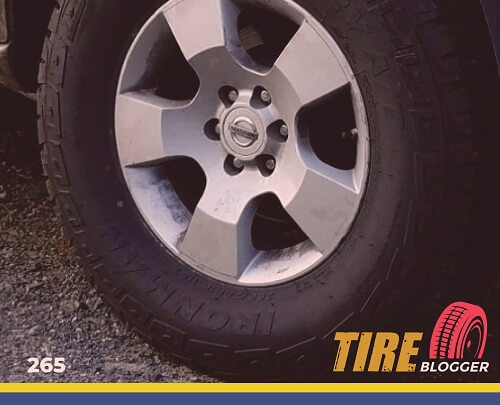
Gas Mileage
The 265 tire’s smaller contact patch and lower weight give it a fuel efficiency advantage over the wider 295.
Less rolling resistance and rotational mass allow the 265 to conserve gas better for daily driving and long trips. The minor difference favors the 265 for gas mileage.
Ride Comfort
The 295 tire’s larger air volume and taller sidewalls provide a comfortable ride over uneven surfaces, absorbing impacts well.
But the 265 excels on smooth highways with a quieter, smoother ride. For everyday driving, comfort differences are marginal between these two tire sizes.
Aesthetics Look
A 295 tire offers a more aggressive, rugged visual appeal than the smaller 265 tires. However, the 265’s smaller size aids vehicle aerodynamics slightly. For most drivers, aesthetic differences are subtle and come down to personal taste.
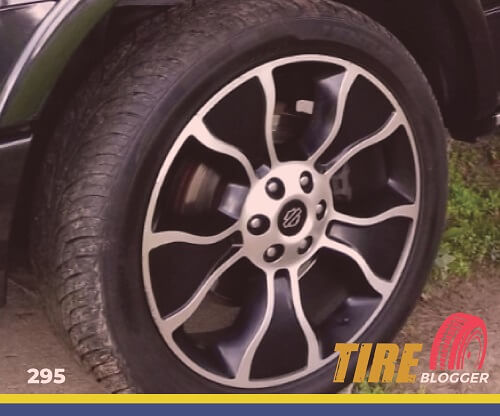
Handling & Stability
The 265 tire offers slightly quicker steering response and handling due to its smaller size. But the 295 provides more stability and traction, especially off-road. For daily driving, handling differs little between 265 and 295 sizes.
Noise & Vibration
The 265 transmits minor road vibration but generates less noise than the wider 295 tire. A 295 is louder on the highway but better dampens bumps and vibrations off-road. Differences in noise and vibration are moderate between these sizes.
Durability & Wear
The 265 tire shows slightly more even wear and marginally longer tread life. The bigger 295 tire absorbs more impact, but its added weight causes more drivetrain wear. For most drivers, durability is comparable between 265 and 295 tires.
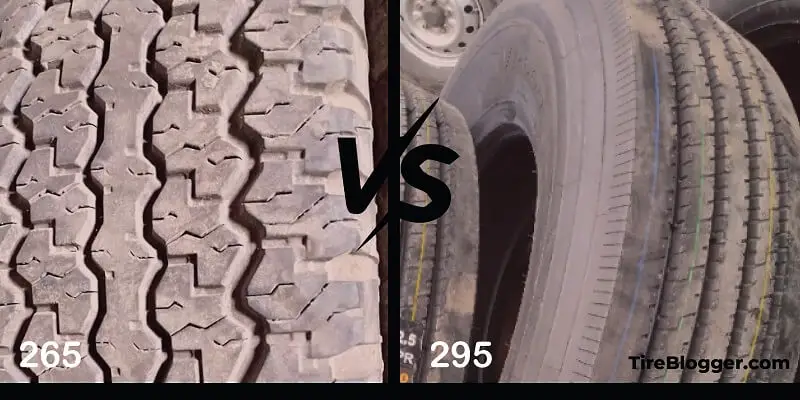
Adverse Conditions
A narrower 265 tire can cut through snow more effectively, while a wider 295 tire provides better traction in mud or loose dirt. But both tires perform similarly well in adverse conditions for moderate rain or light snow.
Difference Between 265 and 295 Tires
The main difference is the section width. 295 tires are 30mm wider than 265 tires, affecting performance factors like grip, handling, and fuel efficiency.
Can I Use 265 Tires Instead of 295?
Possible, as rim width ranges overlap. However, ensure aspect ratio and rim diameter match your current setup.
If they don’t, keep overall diameter difference within 3% to avoid affecting speedometer accuracy and vehicle performance.
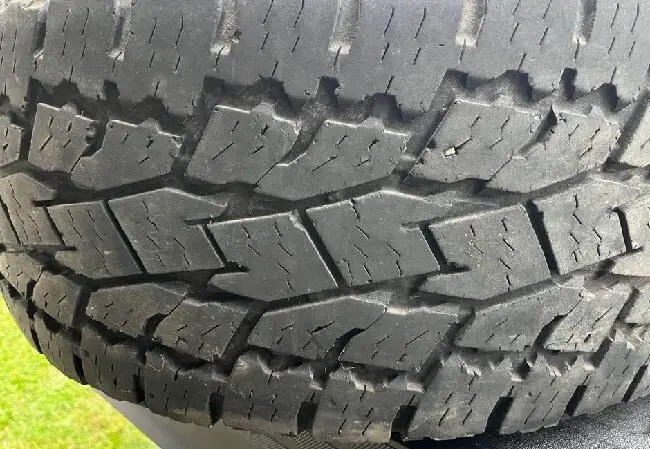
Can I Use 295 Tires Instead of 265?
Possible, due to overlapping rim width ranges. To maintain speedometer accuracy and vehicle performance, new tires should have matching aspect ratio and rim diameter or less than 3% overall diameter difference.
Can I Put 265 Tires on 295 Rims?
Yes, you can put 265 tires on rims designed for 295 tires. The ideal rim width ranges overlap, allowing for proper fitment.
Can I Put 295 Tires on 265 Rims?
Yes, you can put 295 tires on rims designed for 265 tires. The ideal rim width ranges overlap, enabling proper fitment.
Our Observation
After comparing the 265 and 295 tire sizes, I’m struck by how similar they really are. The 30mm difference in tread width seems minor when looking at the big picture.
I believe factors like intended use, wheel size, and visual appeal play a larger role in choosing between the two sizes than minute differences in ground clearance or fuel economy. I don’t think one clearly outperforms the other for most daily drivers.
I would base my choice on prioritizing a beefier off-road look or maximum smoothness on paved roads. For me, aesthetics and ride comfort are more important than the subtle performance differences between these two capable, durable tires.

Meet Caitlin McCormack, a Tire Size Expert and Blogger Passionate About Everything Related to Tires. With Years of Experience in the Tire Industry, Caitlin Has Become an Expert in Tire Sizes and Their Impact on Vehicle Performance.
